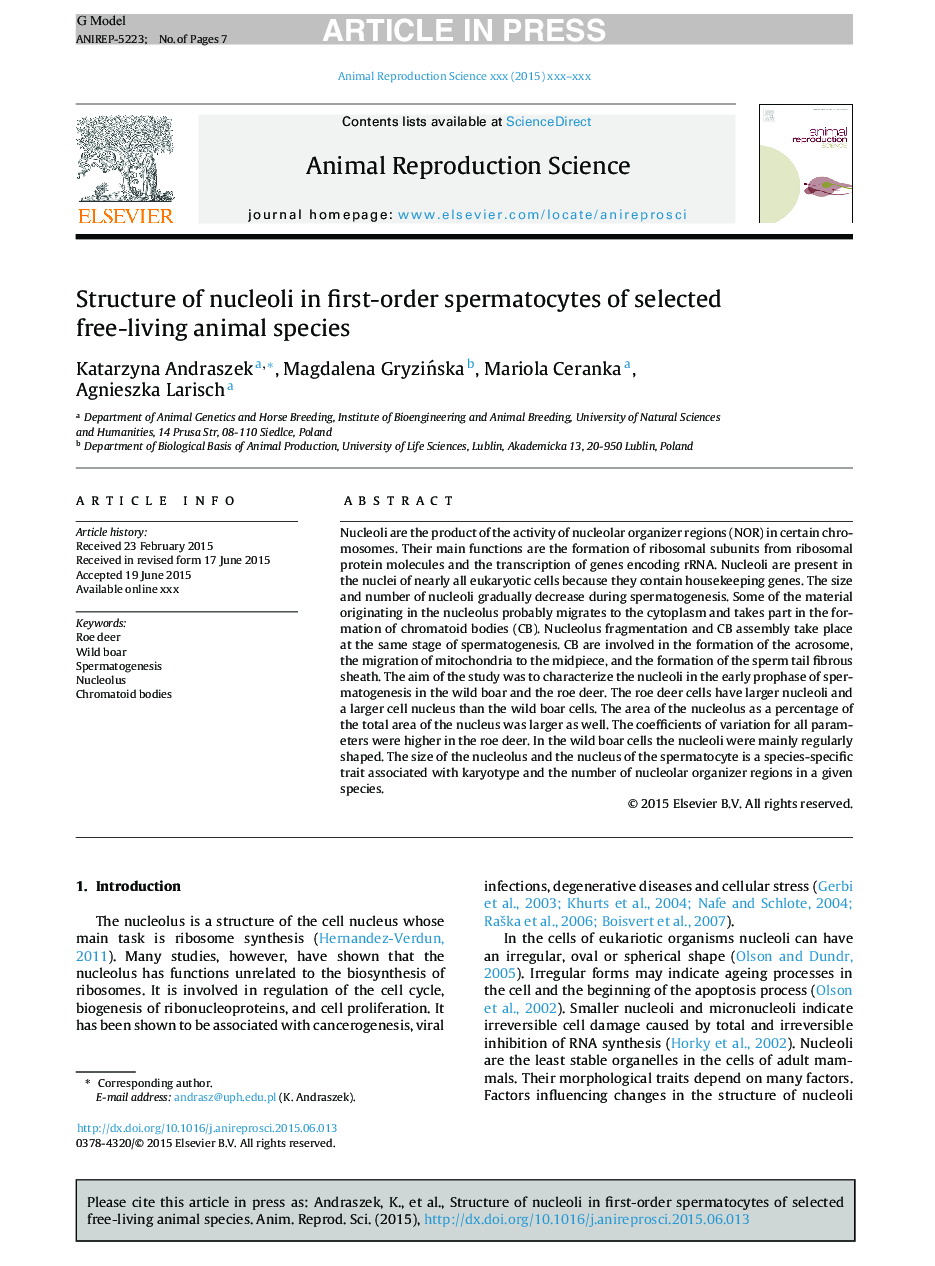| Article ID | Journal | Published Year | Pages | File Type |
|---|---|---|---|---|
| 8404303 | Animal Reproduction Science | 2015 | 7 Pages |
Abstract
Nucleoli are the product of the activity of nucleolar organizer regions (NOR) in certain chromosomes. Their main functions are the formation of ribosomal subunits from ribosomal protein molecules and the transcription of genes encoding rRNA. Nucleoli are present in the nuclei of nearly all eukaryotic cells because they contain housekeeping genes. The size and number of nucleoli gradually decrease during spermatogenesis. Some of the material originating in the nucleolus probably migrates to the cytoplasm and takes part in the formation of chromatoid bodies (CB). Nucleolus fragmentation and CB assembly take place at the same stage of spermatogenesis. CB are involved in the formation of the acrosome, the migration of mitochondria to the midpiece, and the formation of the sperm tail fibrous sheath. The aim of the study was to characterize the nucleoli in the early prophase of spermatogenesis in the wild boar and the roe deer. The roe deer cells have larger nucleoli and a larger cell nucleus than the wild boar cells. The area of the nucleolus as a percentage of the total area of the nucleus was larger as well. The coefficients of variation for all parameters were higher in the roe deer. In the wild boar cells the nucleoli were mainly regularly shaped. The size of the nucleolus and the nucleus of the spermatocyte is a species-specific trait associated with karyotype and the number of nucleolar organizer regions in a given species.
Related Topics
Life Sciences
Agricultural and Biological Sciences
Animal Science and Zoology
Authors
Katarzyna Andraszek, Magdalena GryziÅska, Mariola Ceranka, Agnieszka Larisch,
